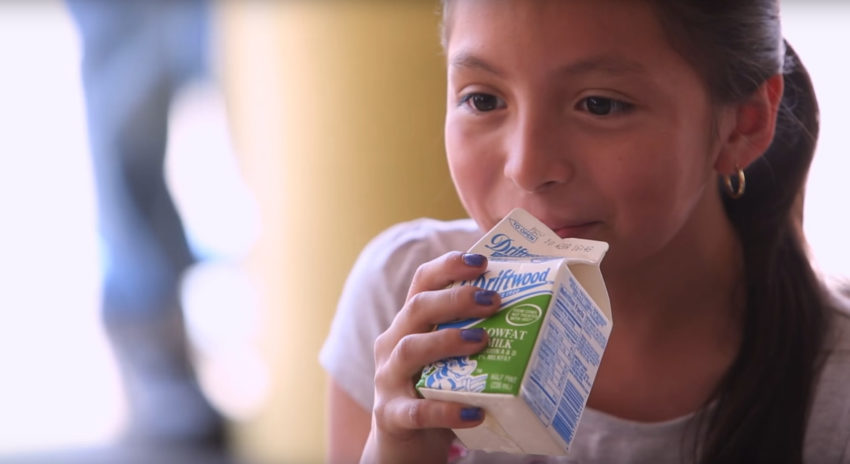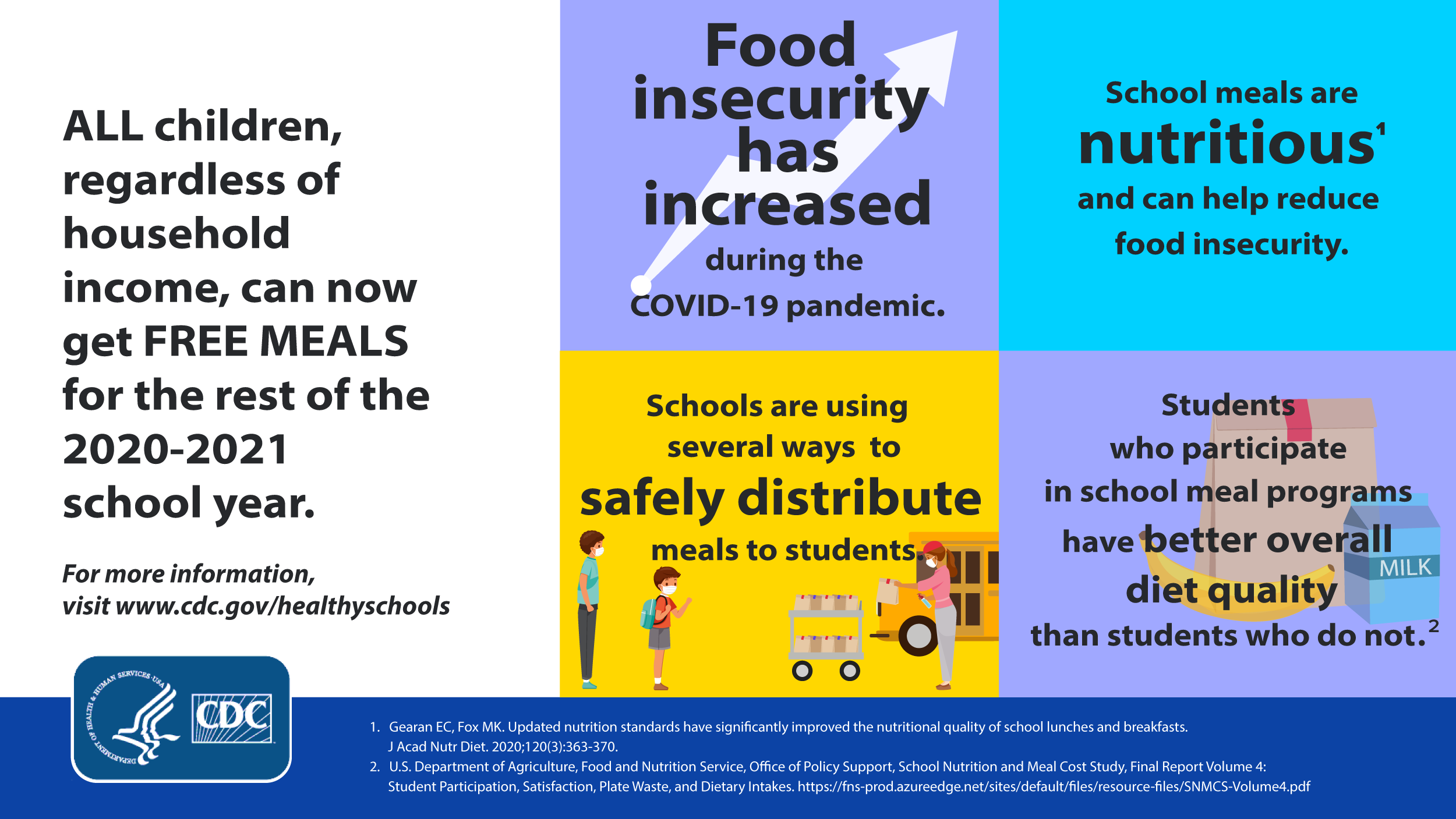
Share On Social!
By CDC Healthy Schools
Guest Blogger for Salud America!
Even though parents are used to juggling multiple roles and responsibilities, 2020 has brought on challenges.
As a result of the COVID-19 pandemic, which has particularly impacted Latinos, many parents are helping their children with virtual learning while also balancing responsibilities at work and at home.
If one of your new responsibilities is making sure your student is set up for success with breakfast and lunch, but you are stressed over buying groceries and making nutritious meals during the school day, there are solutions!
The U.S. Department of Agriculture (USDA) is providing free school meals for all kids younger than 18 years during the entire 2020-2021 school year through June 20, 2021. USDA previously enabled free school meals through December 2020.
UPDATE 4/22/21: Just a month after USDA announced that free school meals for the summer of 2021, USDA also announced that free school meals would continue through the 2021-2022 school year, until June 30, 2022.
 The move saves you time with home meal prep and helps stretch the household budget.
The move saves you time with home meal prep and helps stretch the household budget.
Not to mention, school meals are nutritious—students who participate in the school meal programs consume more milk, whole grains, fruits, and vegetables during mealtimes, according to this report. Students also have better overall diets than students who don’t participate, according to this study and this report.
School nutrition programs are working hard to ensure all students have continued access to safe, nutritious school meals, whether students are attending class in-person, online or a combination of the two.
Programs are using several ways to get meals to students, including:
- Delivery on school bus routes.
- Contactless pickup at locations throughout the community.
- Grab-n-go options at school.
- Meals safely delivered to the classroom.
School nutrition programs may provide students with meal kits to assemble at home, or pre-assembled meals that include whole grains, lean proteins, fruits, vegetables, and milk. There may be options for you to pick up to 5 days of meals at one time, saving time on travel and ensuring your child will have good nutrition during the school week.
Visit your school’s website to learn more about how to access school meals for no charge. And remember, more school meals served means more kids getting nutritious foods and more support for your school district’s nutrition program.
Also, here is what school nutrition professionals need to know.
Email cdchealthyschools@cdc.gov to join our partner e-blast list and be the first to learn about new tools, resources, or updates.
By The Numbers
142
Percent
Expected rise in Latino cancer cases in coming years



